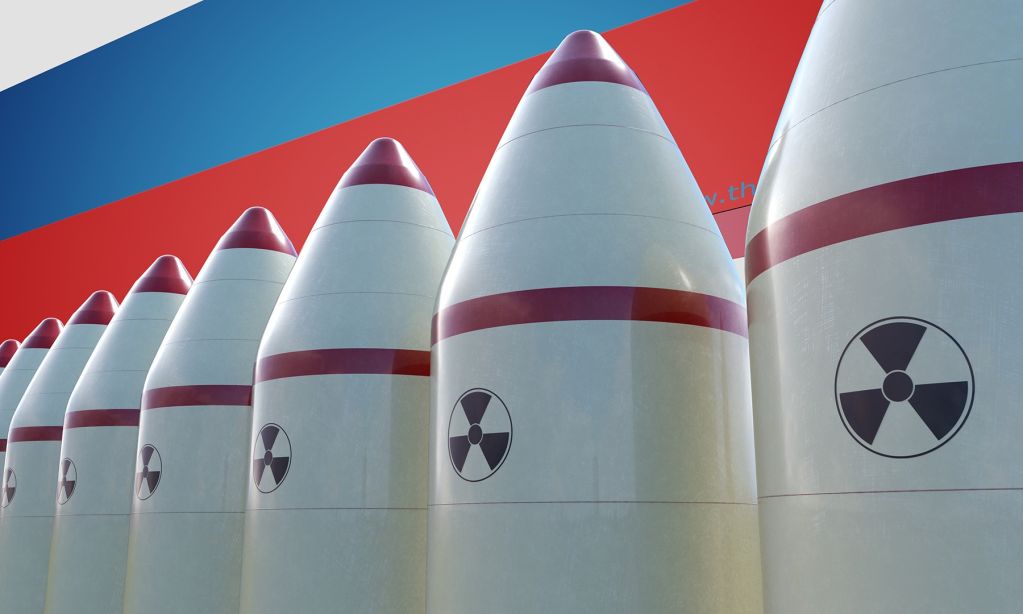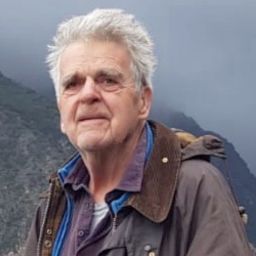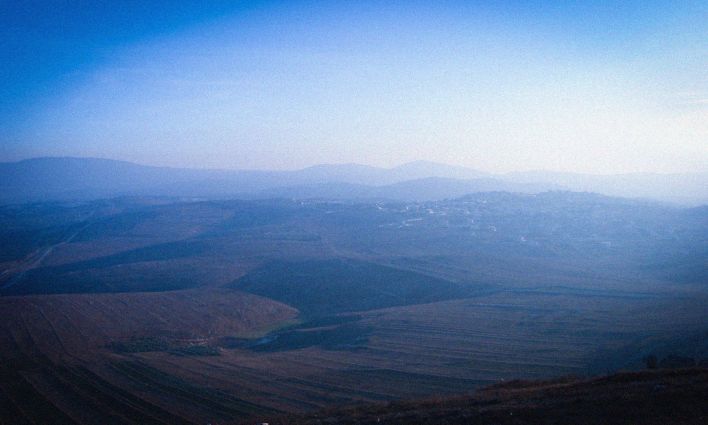Nuclear weapons didn’t make the cut in a Canadian government think tank’s forecast of 35 ‘plausible’ world shaking disruptors it advises decision makers to heed in their planning.
It’s no surprise. Since the end of the Cold War—and associated sense of relief after decades of atomic anxiety—concerns about nuclear weapons have fallen off the page. Plastic drinking straws draw more attention. The subject is regarded as low value and gets little ink in the press allowing nuclear policy making to mostly be conducted without scrutiny in its own echo chambers.
Yet the role of nuclear weapons keeps growing in step with deteriorating global relations, the Stockholm International Peace Research Institute (SIPRI) reported in June on publication of its 2024 yearbook. The “risk of a nuclear weapon being used has reached heights not seen since the Cold War,” UN General Secretary António Guterres also warned in June.
Canada’s department of Employment and Social Development’s think tank, Policy Horizons, produced the 2024 Disruptions on the Horizon report which speculates on potential risks to and upheavals in the years to come. The report cites world war among a catalogue of theoretical risks, such as Canadian unity unravelling and a billionaires’ putsch.
World war is considered low risk in the color-coded citation of disruptors. But current confrontations in Ukraine and the Middle East, perennial tensions between nuclear armed India and Pakistan, North Korea’s belligerence, threaten nuclear escalation or an accident on a smaller scale than world war—whose catastrophic end would no doubt be sealed by nuclear weapons.
Since the Cold War, world leaders have taken a wrecking ball to the edifice of nuclear arms control. New START, the last agreement between Russia and the US, expires in 2026 while China’s global ambitions and expanding nuclear arsenal, compounded by souring global relations, complicate any bid to restore nuclear restraints. Steps to reduce nuclear risk and prevent crises spiralling out of control are considered a best option.
In this new unsettled nuclear environment Canada is not a powerless bystander. Although it does not possess nuclear weapons, it is a NATO member, partners the US in the North American Aerospace Defence Command (NORAD) and participates with all its allies, excepting France, in the organization’s Nuclear Planning Group. Together, thismakes Canada a player in shaping the policies of the nuclear alliance, says Matt Korda, a senior research fellow for the Nuclear Information Project at the Federation of American Scientists, in Washington DC where he coauthors the Nuclear Notebook.
“Those policies are adapting in the context of an increasingly militarized geostrategic environment. Not only are we seeing heightened nuclear signaling from NATO in the form of surfacing submarines and bomber exercises, but NATO also appears to be increasing the number of bases that could potentially host nuclear weapons during wartime,” Korda told The Monitor in an email exchange.
“It is unlikely that most Canadians are aware of these changes, yet they are affected all the same. And Canada would certainly be implicated in the event of an actual nuclear war, due to the country's hosting of critical radar systems as well as its participation in NATO. If Canada decided to host US ballistic missile defence interceptors, an option that has been promoted by some political figures and parties, they would also become clear targets in a nuclear conflict.
“Canadians, just like citizens of every other nuclear-armed or -allied country, have a right to know which nuclear policies their governments are promoting in their name. To that end, I hope that Canadian policymakers in turn feel empowered to demand greater nuclear transparency from their allies and partners,” Korda said.
Media remain the principal conduit for providing the public with information about current nuclear politics. Yet nearly every nuclear-armed country is battening down the hatches on information about their weapons activities amid the current resurgence of investment in nuclear weapons, fraying international relations and increasing emphasis on military aggression, Korda says.
Journalists polled last year by Atomic Reporters with the Stanley Center for Peace and Security said the major obstacles they face reporting about nuclear weapons is access to information followed by lacking technical knowledge.
Limiting transparency surrounding nuclear weapons, says Korda, “is a tremendous challenge for reducing nuclear risks, as it inhibits policymakers from doing their jobs, and silences journalists, activists, and other interested publics from starting conversations about nuclear weapons.”
The distance of time and unfamiliarity with the subject and its lack of value hinders journalists from probing nuclear weapons issues. The notion that the public doesn’t care about a threat presumed to be too complex, too shrouded in secrecy and unstoppable, may explain why media regard it with such disinterest, said Jon Letman, a Hawaii-based freelance journalist, whose reportage on the subject is published globally.
“Hopefully more reporters will help the public understand the enormous dangers and unsustainably high costs of continuing to pursue nuclear folly, especially when there are far better alternatives,” Letman said.
“Contraction of the news industry is leading to the growth of news deserts and the dearth of critically-minded coverage on everything really important, including nuclear issues,” says Alicia Inez Guzman, a rare reporter covering nuclear issues for Searchlight New Mexico, a Santa Fe, US, non-profit.
“There aren’t enough (reporters) to even cover the traditional beats like criminal justice, housing, politics much less the very specialized beat of nuclear reporting,” Guzman said. Her beat pays close attention to the storied Los Alamos Laboratories where the first nuclear weapon was developed and currently plays a key role in the US nuclear weapons modernisation program
A rule of journalism is to follow the money—and as nuclear arsenals from London to Beijing expand and modernise, investors, pension funds, insurance companies, and asset managers hold $US477 billion in shares and bonds in 24 nuclear weapon producing companies, according to a new report (Canada not included). In the US the final bill for modernisation of its arsenal over the next 30 years is expected to exceed two trillion dollars.
In journalism’s hollowed out state, steps to support reporting on a subject that is secretive—yet poses incalculable risk for the public—demands more attention. Introducing the subject to schools of journalism and other academic disciplines to ensure generations who will inherit current trillion-dollar commitments to the long-term future of nuclear weapons are primed to address them is among proposals.
Champions of nuclear deterrence—based on mutual assured destruction—argue it ensured the Cold War ended without a (nuclear) bang. Skeptics counter it was essentially good luck the planet emerged unscathed. More importantly it was also a consequence of a response by the public—a public that media had kept well informed about nuclear weapons issues throughout the Cold War.
In the early 1980s, the high level of public awareness and concern was reflected in major public protests against nuclear weapons, calls for disarmament and significant changes in policy. The movement swept aside East West barriers. Opponents of nuclear testing in the US and Kazakhstan established the Nevada Palatinsk Movement. At their summit in Reykjavik in 1986 Soviet Union leader Mikhail Gorbachev and US President Ronald Reagan came close to agreeing to eliminate all their nuclear weapons. In his memoirs Reagan said he had been influenced by the 1983 ABC TV film ‘The Day After’ about the impact of a nuclear strike on the US.
Agreements between Gorbachev and Reagan such as the Intermediate-Range Nuclear Forces Treaty (INF Treaty), from which President Trump formally withdrew the US in 2019, followed by Russia, were instrumental in reducing the number of nuclear weapons from an estimated more than 70,000 in 1986 to currently just over 12,000 according to the Federation of American Scientists 2024 Status of World Nuclear Forces, co-authored by Korda. The US has announced deployment of long range missiles to Germany previously prohibited under the INF.
There appears to be clear Canadian support for breaking the nuclear logjam. A 2021 Nanos Research poll found 74 per cent of Canadians support the new Treaty on the Prohibition of Nuclear Weapons (TPNW). This isn’t a new development—two decades ago, an Angus Reid poll found most Canadians support a global ban on nuclear weapons.
Nuclear weapons have been bound by a Gordian knot since Oppenheimer’s New Mexico Trinity test ushered in the nuclear age on July 16, 1945, fulfilling the goal of the Manhattan Project, followed less than a month later by the bombing of Hiroshima and Nagasaki. Policy makers currently shy from trying to loosen the knot. The public may represent an untapped resource, a potential crowdsourced solution to finding ways to untie it, slow the rush to the latest threat of nuclear Armageddon.







